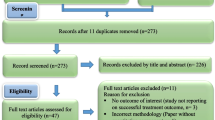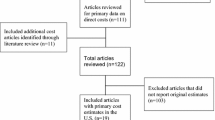Abstract
In view of sweeping health and human service reforms around the US and abroad, program performance standards, their measurement, and their application in program accountability have become critical functions. Measuring the performance of healthcare systems has added a new dimension to the evaluation and management of acute care. Multiple-level evaluation approaches — including randomized controlled trials, cohort, case control and retrospective studies, economic modeling and cost-effectiveness analyses, and case studies — will be necessary to persuade diverse groups of stakeholders, particularly when the interventions are multi-faceted. The goal of multi-level evaluation approaches is to develop an internally consistent set of findings that produce a preponderance of evidence in support of a particular management strategy. Such an approach should also eliminate alternative explanations.
The management of certain infectious diseases such as pulmonary tuberculosis (TB) has refocused the attention of performance evaluators upon the concept of continuum of care. Multiple-level evaluation approaches consistently underscore a case management approach based on the use of comprehensive, community-based, patient-centered directly observed therapy (DOT) programs for achieving the highest treatment completion rates for patients with pulmonary TB.
As lengths of stays in hospitals continue to shorten, it has become apparent that clinical outcomes cannot be measured during the hospitalization episode(s) alone. This paper discusses the evidence-based case management of pulmonary TB, concluding that patient-centered approaches involving DOT provide the most effective care and disease prevention. Health and public healthcare systems should adopt such patient-centered approaches when managing resurgent infectious diseases such as pulmonary TB.




Similar content being viewed by others
References
Moore RD, Chaulk CP, Griffiths R, et al. Cost-effectiveness of directly observed versus self-administered therapy for tuberculosis. Am J Respir Crit Care Med 1996 Oct; 154 (4 Pt 1): 1013–9
Davis MS. Variations in patients’ compliance with doctors’ orders: analysis of congruence between survey responses and results of empirical investigations. J Med Educ 1966 Nov; 41(11): 1037–48
Rubel AJ, Garro LC. Social and cultural factors in the successful control of tuberculosis. Pub Health Rep 1992; 107: 626–36
Bloom BR, Murray CJL. Tuberculosis: commentary on a re-emergent killer. Science 1992; 257: 1055–64
Tuberculosis Program Management in the United States 1986–1991. Atlanta (GA): Centers for Disease Control and Prevention, 1993
Bloch AB, Cauthen GM, Simone PM, et al. Completion of tuberculosis therapy for patients reported in the United States in 1993. Int J Tuberc Lung Dis 1999 Apr; 3(4): 273–80
Wilkinson D. High-compliance tuberculosis treatment programme in a rural community. Lancet 1994 Mar 12; 343(8898): 647–8
Improving patient adherence to tuberculosis treatment. Rev ed. Atlanta (GA): Centers for Disease Control and Prevention, US Department of Health and Human Services, Public Health Services, 1994
Zwarenstein M, Schoeman JH, Vundule C, et al. Randomised controlled trial of self-supervised and directly observed treatment of tuberculosis. Lancet 1998; 352(9137): 1340–3
Practice guidelines for public health: assessment of scientific evidence, feasibility and benefits: a report of the guidelines development project for public health practice. Albany (NY): Council on Linkages Between Academia and Public Health Practice, 1995 Oct
Chaulk CP, Kazandjian VA. Directly observed therapy for treatment completion of pulmonary tuberculosis: Consensus Statement of the Public Health Tuberculosis Guidelines Panel. JAMA 1998 Mar 25; 279(12): 943–8
El-Sadr W, Medard F, Berthaud V, et al. Directly observed therapy for tuberculosis: the Harlem Hospital experience, 1993. Am J Public Health 1996 Aug; 86 (8 Pt 1): 1146–9
Chaulk CP, Moore-Rice K, Rizzo R, et al. Eleven years of community-based directly observed therapy for tuberculosis. JAMA 1995 Sep 27; 274(12): 945–51
Chaulk P, Kazandjian VA. Setting performance measures for public health ac-countabililty. In: Kazandjian VA, editor. Accountability through measurement: a global healthcare imperative. Milwaukee ((WI)): ASQ Quality Press, 2002: 270–90
Burman WJ, Dalton CB, Cohn DL, et al. A cost-effectiveness analysis of directly observed therapy vs self-administered therapy for treatment of tuberculosis. Chest 1997 Jul; 112(1): 63–70
Palmer CS, Miller B, Halpern MT, et al. A model of the cost-effectiveness of directly observed therapy for treatment of tuberculosis. J Public Health Manag Pract 1998 May; 4(3): 1–13
Chaulk CP, Friedman M, Dunning R. Modeling the epidemiology and economics of directly observed therapy in Baltimore. Int J Tuberc Lung Dis 2000 Mar; 4(3): 201–7
Manalo F, Tan F, Sbarbaro JA, et al. Community-based short-course treatment of pulmonary tuberculosis in a developing nation: initial report of an eight-month, largely intermittent regimen in a population with a high prevalence of drug resistance. Am Rev Respir Dis 1990 Dec; 142 (6 Pt 1): 1301–5
Acknowledgements
The authors thank Ms Dana Bonistalli, Executive Assistant, Center for Performance Sciences, for her assistance in the preparation and editing of the document.
The authors received no funding for this review and have no conflicts of interest directly relevant to the content of this review.
Author information
Authors and Affiliations
Corresponding author
Rights and permissions
About this article
Cite this article
Chaulk, P., Kazandjian, V.A. Comprehensive Case Management Models for Pulmonary Tuberculosis. Dis-Manage-Health-Outcomes 11, 571–577 (2003). https://doi.org/10.2165/00115677-200311090-00005
Published:
Issue Date:
DOI: https://doi.org/10.2165/00115677-200311090-00005




